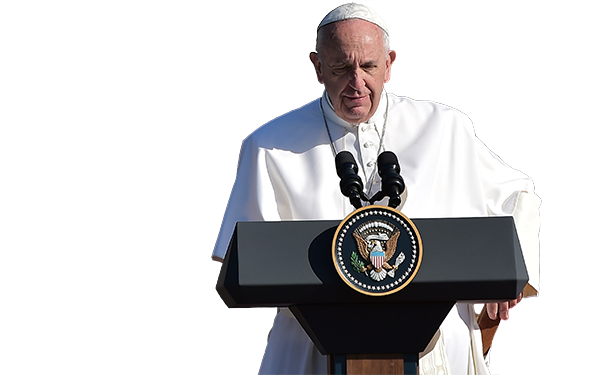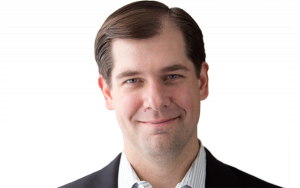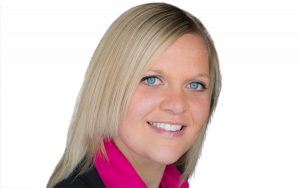On Friday, Pope Francis will become the first pontiff to visit a U.S. Catholic school. His
trip to East Harlem’s Our Lady Queen of Angels, which enrolls an almost entirely low-income and minority student body, will underscore the church’s long commitment to serving the disadvantaged.
The Seventy Four met some of those students during a school visit last week, interviewing a handful who have actually been chosen to speak with Pope Francis during his appearance:
But the Pope’s visit also offers the opportunity to re-introduce America to one of its oldest and most important educational institutions. Catholic schools have contributed mightily to this nation, and, thanks to some exciting but largely unreported innovations, their future is looking brighter than at any time in the past 50 years.
The Rise and Decline of U.S Catholic Schools
American Catholic K-12 education predates, well, America. In 1606, the Franciscans opened the first U.S. Catholic school in St. Augustine, Florida. In 1727, the Sisters of Saint Ursula founded an all-girls academy in New Orleans.
Such small, localized efforts suited the times. In the decades before and after our nation’s founding, there was no “school system” to speak of. Education was largely a private affair. Our earliest public (“common”) schools didn’t gain traction until the middle of the 19th century.
At the time of the Civil War, there were only a few hundred Catholic schools. But by the end of the 19th century, as waves of immigrants from predominantly Catholic European nations settled in our biggest cities, Catholic schools were proliferating.
Part of the explanation was capacity. Public schools, still fledgling, didn’t have the seats to serve the rapidly growing number of boys and girls. An equally important factor, however, was the virulent anti-immigrant and anti-Catholic bigotry swelling at that time. In this era, faith-based instruction was still permitted in public schools, and they, consequently, took on a distinctly Protestant character.
The combination of general anti-Catholic sentiment and public schools seen as hostile to Catholicism caused U.S. Catholic bishops, in 1884, to require every parish to establish a school. Catholic school enrollment exploded from 405,000 in 1880 to 1.9 million in 1920 to 5.6 million in 1965.
But starting in the late 1960s, a confluence of factors led to a half-century of decline. Families fled cities for the suburbs; parishes generated less income to support their schools; fewer priests and nuns meant fewer low-cost educators; less anti-Catholic bigotry meant less need for safe educational havens and charter schools offered families tuition-free alternatives.
Between 1960 and 2010, more than 6,000 Catholic schools closed.
While a significant number of today’s Catholic schools are in the suburbs, many are still located in our most troubled inner-city neighborhoods. A hundred years ago, these schools served that era’s urban poor, recent European immigrants; today, they serve today’s urban poor, primarily African-American and Latino kids.
Why should we care? Because of the powerful, astonishing “
Catholic schools advantage.” Black and Latino Catholic-school students are likelier to graduate from high school and college. The achievement gap is smaller in Catholic schools. Graduates are likelier to vote and be more civically engaged, committed to public service, and more tolerant. Urban Catholic schools even appear to foster social capital in their neighborhoods.
But the continuous decline offered little hope for a rebound. While Andy worked at the White House in the previous administration, he helped organize a summit on the issue and then
authored a White House report. Both got little attention. He’d later write a journal article titled “
Can Catholic Schools Be Saved?”
He worried divine intervention would be needed. Instead, America’s great miracle worker—civil society—came to the rescue.
Blending Old and New
The budding renaissance of urban Catholic schooling is not the result of government initiative. Instead, De Tocqueville and
Putnam would be proud: Educators, social entrepreneurs, private donors, and other faith-based and secular leaders are leading the way. Interestingly, they’re taking a page from the European Renaissance, finding ways to preserve the best of the past while enlivening it with modern innovations.
Three strands of work are particularly interesting.
The first relates to talent. Until the 1960s, nearly all Catholic school educators were nuns, brothers, or priests. But as religious vocations fell, Catholic schools had to build entirely new human-capital pipelines—while competing with government-funded schools.
But creative solutions are emerging. The University of Notre Dame‘s Alliance for Catholic Education (ACE), often called the “
Catholic Teach for America,” is training a growing number of educators. The
Lynch Leadership Academy trains Catholic school leaders alongside charter and district leaders through the Carroll School of Management at Boston College.
The second is new approaches to operating schools. For ages, Catholic schools were autonomous, each run by its parish. But there’s now experimentation—in NYC, Philadelphia, Camden, and DC — with the charter model of school networks. Think Catholic KIPPs.
The school Pope Francis visits is part of the Partnership Schools network, one of these new Charter Management Organization-like entities. A central office allows site-based authority but provides support, services, and direction. These new arrangements encourage classroom innovations, like
Seton Education Partners’ blended model.
The third are the public and private efforts to bring Catholic K-12 education into their city’s portfolio of schools. For decades, private schools were kept at arm’s length of public schools but a new “sector agnostic” approach is taking root.
There are now 59 public programs (like vouchers, tax credits, and education savings accounts) in 29 states enabling families to access private schools. A growing number of nonprofits, like the Philadelphia Schools Partnership, that seek to increase the number of high-quality schools are engaging district-run, charter, and Catholic schools.
New Orleans’ common enrollment system (that enables families to apply to many schools through one form) includes Catholic schools participating in the state’s voucher program.
The Next Generation
In a soon-to-released guidebook for The Philanthropy Roundtable (excerpted here), we discuss the most encouraging innovations in Catholic K-12. In a forthcoming report for the
Friedman Foundation, we work with Juliet Squire in focusing specifically on the CMO-like networks gaining traction in Catholic schooling.
We hope you take a look at these publications, but even more importantly, we hope you keep your eye on the bright future of Catholic education.




;)

